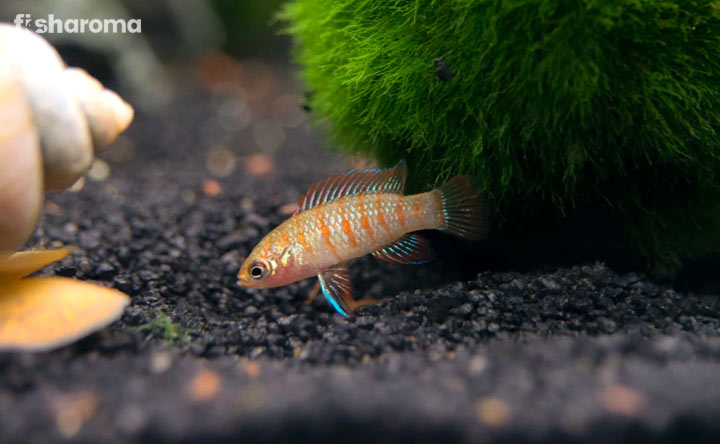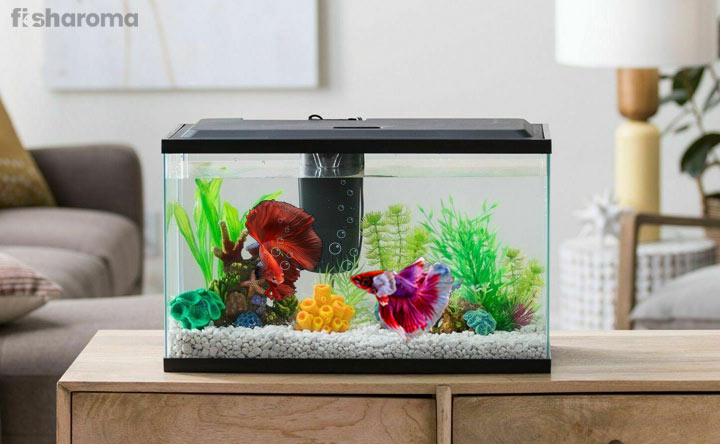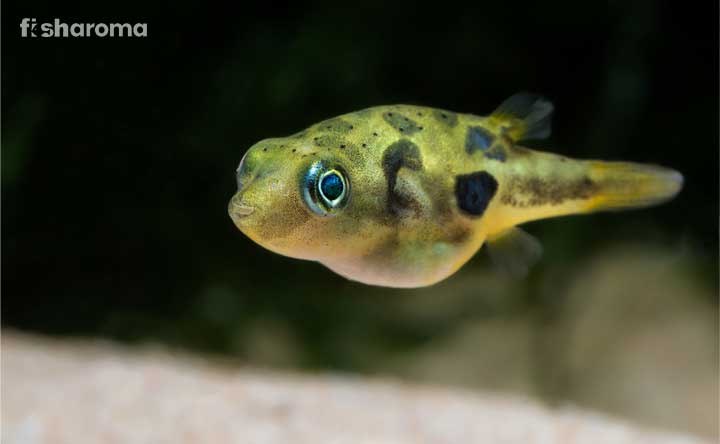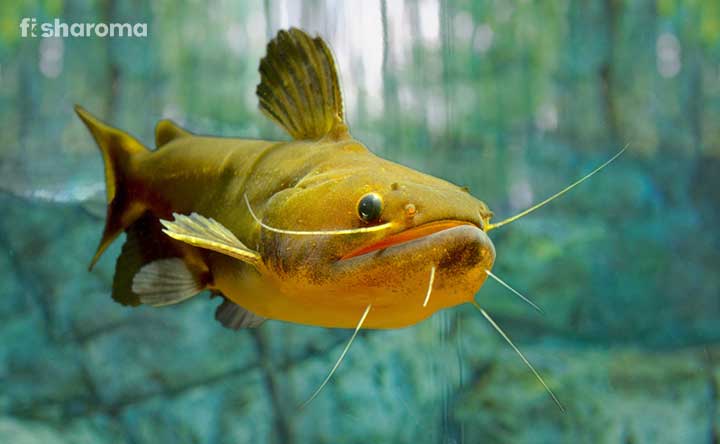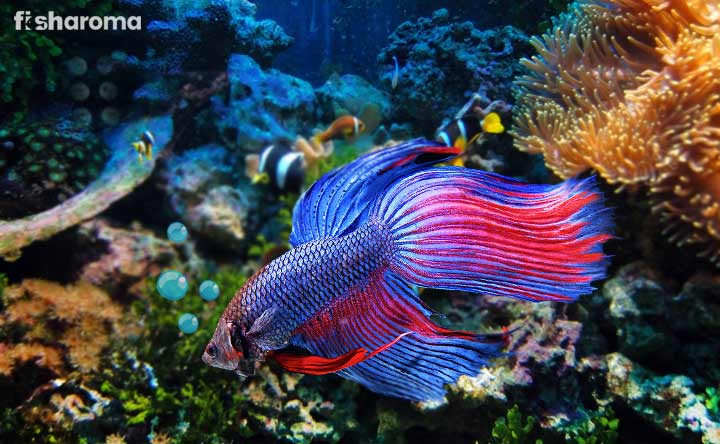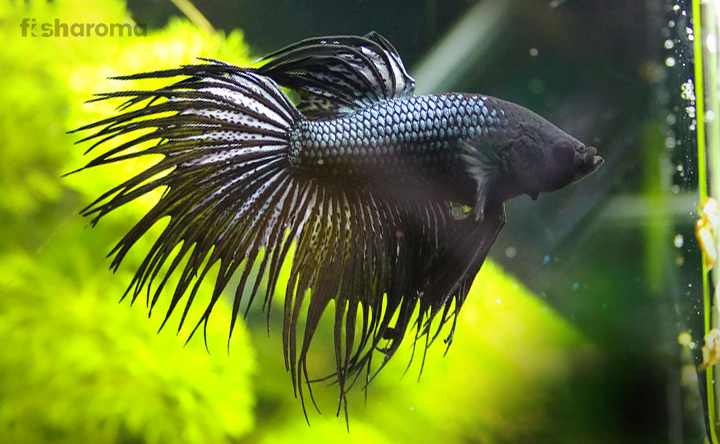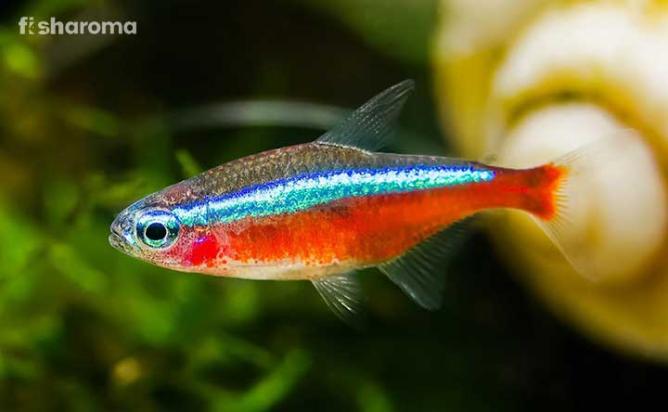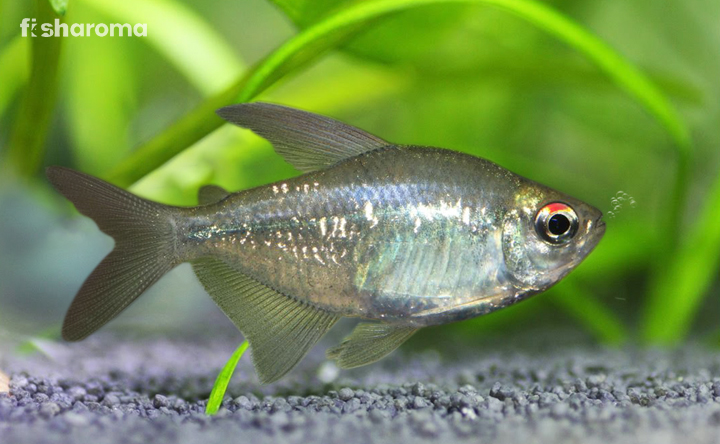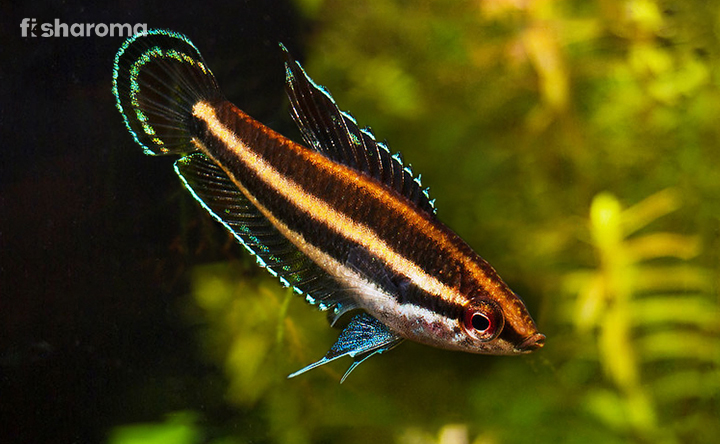Neon Tetra – Ultimate Care Guide for Your Multi-Colored Buddy
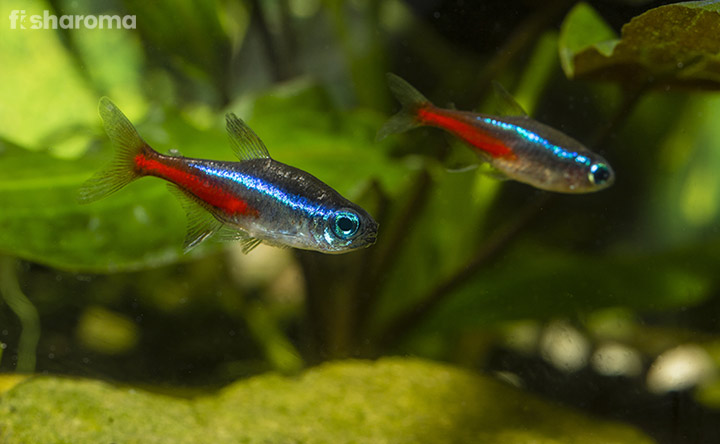
Native to Amazon Basin of South America, Neon Tetra is the dazzling jewel of freshwater. This small and hardy fish is also found near the rivers and streams of Singapore, Hong Kong, and Thailand. Colorful, stunning, active and hardy, this peaceful and popular breed can be the crown of your aquarium because of its aesthetic appearance, and enchanting personality.
Its simple dietary needs and adjustable nature makes it one of the best buddies of a beginner aquarist. You just need to follow a few things in order to take care of this species.
Quick Details on Neon Tetra
Before going to the depth of the article, we would like to provide you with quick details about this passive-natured fish of tropical freshwater. Take a short look at the table to acquire brief information about the fish.
| Scientific Name | Paracheirodon innesi |
| Origin | Western Brazil, South America, Southeastern Columbia, Eastern Peru |
| Life-Span | 5-8 years |
| Colors | Red, Blue, Bi-Color, and Translucent |
| Temperament | Peaceful |
| Size | 1.5” (4cm) |
| Diet | Omnivore |
| Family | Characidae |
| Compatibility | Social with Non-Aggressive Aquatic Species |
| Tank Size | 10 gallons |
| Care Level | Easy |
Overview
A member of Characidae family, it is popular for its active behavior, passive nature and shinning scales on its body like a diamond sparkling in the water. Its shimmering appearance is one of the reasons for petting the fish both in commercial and residential areas. It is also known as True Neon Tetra.
This shimmering fish is familiar to human beings. So, novice aquarists can pet this fish without any complicacy. The starting price range of this fish is $1.59; this may differ from place to place.
Origin of Neon Tetra
Neon Tetra was first found in 1934 the blackwater streams and tributaries of Amazon Basin and Orinoco River. It is distributed to the rivers and streams near North America, Eastern Peru, Western Brazil, Eastern Europe, Malaysia, and Southeastern Colombia.
This breed is often found in black water, warm water, clear water, and small streams. Sometimes, you will also find a school of Tetras swimming in large ponds or lakes. Generally, fishkeepers find them from the blackwaters beneath thick forest where a very little amount of sunlight falls. Tetras like dwelling in the middle layer of the water both in wild and in captivity.
Neon Tetra Appearance
Neon Tetra draws its attention by its glowing multi-colored body and a turquoise blue line from the eyes to its adipose fin which is round in shape. Below a blue stripe, this fish has a white-silver belly. Also, a red stripe runs from the middle of its body to its caudal fin. However, apart from the blue and red coloring, it is transparent, which helps the species hide from their predators.
This spindle-shaped fish has large eyes on its head and a rounded nose. Moreover, it can grow up to 2.5” (6.35) in wild but 1.5” (3.81cm) in captivity. The male fish is slimmer and taller than the female.
Male Tetras are slimmer than the females and they have blue stripes straight in their body. However, the same blue stripes bent over the body of the female fish because its belly is round in shape.
Neon Tetras have the capacity to turn off their blue/red iridescent color to stay safe from their enemies. Moreover, their shades start fading when they are sick or asleep.
Fishkeepers often get confused between the appearance of Cardinal Tetra and Neon Tetra, but both are different species. While purchasing a Neon Tetra, you can see a bright red horizontal line running from the middle body to the tail. But a red line runs to the entire body of Cardinal Tetra. Neon Tetra is also known as a cousin of Cardinal Tetra, which is the prime reason that both of them look similar.
Temperament of Neon Tetra
This fish can be a perfect addition in a beginner’s tank because this species is hardy, adjustable and peaceful, thus it is very easy to pet. You will never find them alone because they always prefer living in a shoal of fish. This shows their social and friendly nature with other fish.
Aggressive and large fish breeds can bully or eat them, so avoid keeping them with territorial and predator fish.
Suitable Tankmates for Neon Tetra
Neon Tetra is a very familiar and generous fish that can adjust with different types of species. Tetras don’t feel awkward to share their home with other peaceful aquatic species, but they are scared of large predator fish which can fight with them and can even eat them. Therefore, this is your only responsibility to safeguard your little shinning companion by keeping it with peaceful and friendly aquatic species such as:
- Barbs
- Rasboras
- Guppies
- Mollies
- Loaches
- Small Gouramis
- Small Catfish (like Cory Catfish)
- Dwarf Cichlid
- Clownfish
- Bristlenose Pleco
- Cherry Shrimp
- Snails
Unsuitable Tankmates
It is your duty to look after the safety and comfort of your little pet Neon. So, acquire knowledge about those fish breeds which can cause trouble to your tiny swimmer-buddy. Take a look at a few fish names which should be avoided in the tank:
- Bettas
- Giant Gourami
- Angelfish
- Sharks
- Piranhas
- Large Cichlids
- Large Aquatic Species
- Predator and Aggressive Fish
Compatibility of Neon Tetra
Expert aquarists suggest keeping a school of Neon Tetras (about 15-20) in a community tank because this fish likes to dwell with the fish of the same community, as mentioned above. You can keep Neon Tetra with other Tetras some are its best companions like:
- Diamond Head Tetra
- Black Skirt Tetra
- Green Neon tetra
- Red Neon Tetra
Diet Plan for Neon Tetra
Feeding the wrong diet to the fish may cause different types of illness. So, why don’t we study about the food requirement of your pet Neon Tetra?
You will often notice this fish consuming insect larvae, algae, and minuscule invertebrates. However, along with live and natural foods, you can also feed dry pellets and flakes to this omnivoros fish. Take a look at some of the favorite foods of this fish that has rich protein:
- Brine Shrimp
- Blood Worms
- Tubifex Worms
- Daphnia
- Vegetable Crumbs
- Fruit Slices
You will also find dried pellets and flake foods available in the market such as:
- Hikari Tropical Micro Pellets
- Tetra Bits Complete Bioactive Formula Fish Food
- Tetra Bits Complete Fish Food for Growth and Health
Remember, you have to feed them very small pieces according to the size of their mouth because feeding the wrong size can result in choking hazard. Feed them 2-3 times a day as per the right quantity mentioned by a fish nutritionist.
Neon Tetra Tank Requirements
Before you set a tank for your pet Neon Tetra, keep in mind that Tetras are sensitive to change of water. They fall sick in newly cycled tanks, so replacement should be done when the water condition becomes too poor. Follow some guidelines while setting a Neon Tetra tank:
Tank Size
Tank size is important to know before keeping any pet fish because it will define its lifestyle. While setting a tank for Neon Tetra, the smallest size can be 10 gallons, but if you are keeping 15 tetras together then purchase a 20-gallon aquarium for the comfort of the fish.
Ornaments
As we have mentioned before that Tetras like living in the river and streams beneath thick forests and they even prefer lots of herbs in the water. So, while setting a tank for this species, try to keep freshwater plants like Anacharis and other floating plants to give them a natural feel.
Also, keep driftwood for this algae-eater as algae are found on the body of driftwood. Small rocks, pebbles, and the dark-colored substrate are perfect for setting an appropriate bed of aquarium.
Lighting
Neon Tetra prefers subdued lighting because it lives in the Amazon River basin in the dense forest. So, fix a low watt fluorescent light of 2 watts on the ceiling of the tank.
Filter
Neon tetra does not produce a huge bio-load, so the filtering need is not very high in its tank. Just bring a regular sponge filter for the aquarium of your pet Tetra to refine the water.
Water Type for Neon Tetra
We cannot live without oxygen; similarly, aquatic species cannot survive without good quality water. So, know the ideal water condition before petting a Neon Tetra. Here are a few things you should keep in mind while planning to breed this fish.
Temperature
Neon Tetras are habituated to dwell in warm rivers near South America, so the ideal water temperature for its tank should be 70-81°F (21-26°C).
pH Level
The pH level of the water should be 6.0-7.0.
Hardness
The hardness of the water should be <10 dGH, as this tropical water fish prefers living in soft water.
Cleaning Method
Cleaning a tank is obviously an important duty when you are a fish hobbyist. However, don’t follow any wrong procedure to clean it. Collect a soft sponge or brush and wash the entire part inside the tank with clean water and soft liquid soap. After cleaning, you can use a water conditioner to maintain hygiene for a long time. Wipe the entire aquarium with a soft dry cotton cloth after a wash.
Replacement Process
Water replacement is necessary to maintain the quality of the water in the aquarium, but frequent water replacement for the Tetra tank can be deadly for this fish because it is sensitive to the change in water condition. Therefore, don’t change the water weekly, instead replace about 25% of the water in a month.
While doing this process, don’t annoy the tiny fish, and try to shift them to another tank with a soft fishnet. Never forget to maintain the same temperature, pH level, and hardness of the water while keeping a fresh batch of aerated water.
Neon Tetra Breeding
Though it is a simple and passive natured species, its breeding process is not very easy. You need to maintain the water temperature and pH level if you are encouraging the mating and breeding of this fish. So, arrange a separate tank by following the water temperature, so that the fish can spawn and lay eggs in that tank.
Place both the male and female Neon Tetras in a separate tank. The water temperature of the tank should be 75°F (21°C), with 1-2 dGH water hardness and 5.0-6.0 pH level. These are the ideal water condition to lay eggs.
The female fish is also known as egg scatterer because it lays about 100 eggs, and the male fish fertilizes them. You will find the eggs stick to the leaves of the water plants, so you have to keep aquatic plants in the breeding tank of Tetra. After the fertilization process, remove the parents from the breeder tank because the parents can eat the fries.
Once the eggs get hatched, you can start feeding them a small number of baby fish foods like small brine Shrimp, Egg Yolk, Rotifers and Infusoria as per the suggestion of the veterinary nutritionist.
Spawning fish tries to jump out, so try to cover the tank tight with a durable tank lid.
Types of Neon Tetras
You may pet different types of Neon Tetras in your aquarium that are found in the rivers near Central and South America. All of them belong to the same family but their habits and appearance are dissimilar to one another. Have a look at a few names:
- Longfin Neon Tetra – The body color and patterns of this Neon Tetra are subdued, and its fins are longer than a normal Neon Tetra. The upper part of the fish is light blue-green and the bottom portion is red in color. Moreover, its body is flexible and it can bend it.
- Albino Neon Tetra – You will not find white or blue stripes on the body of this golden-white fish. Instead, this breed has yellowish and pearlescent colors on its body.
- Diamond Head Neon Tetra – The fins and tail of this shimmering metallic-shaded fish are transparent in color. Its head and eyes shine just like a flawless diamond in water. So, this can be one of the great choices for the aquarium of fish hobbyists.
- Red Neon Tetra – The other name of Red Neon Tetra is Cardinal Tetra that is just similar to True Neon Tetra by its appearance. The red stripe of its body extends from the head to the anal fin. It is known that conscientious fishkeepers like breeding this fish because it helps in saving the rainforest by providing supportable income to the native people in the area where it dwells.
- Gold Neon Tetra – Another name of Gold Neon Tetra is Glowlight Tetra which is extremely popular for the residential aquariums. Instead of blue or red, this tetra fish has an iridescent stripe on its body.
- Green Neon Tetra – The red patch on the body of this fish is similar to True Neon Tetra, but the patch is less prominent. The flashy blue-green stripe of Green Neon Tetra attracts the attention of fish enthusiasts.
- Black Neon Tetra – It lacks brightness as compared to other Tetras. The body of this fish is patterned with a combination of the black stripe with silver-white contrast.
Diseases of Neon Tetra with Interventions
Diseases are common for every living being in this world. Similarly, whether you have hardy or sensitive fish breed in your tank, it will be prone to some health issues. Now, you need to know about the health problems of your pet fish, so that you can take proper care of the breed. There are some common diseases of this fish such as:
- Parasitic Infections
- Skin Flukes
- Bacterial Infections
- Ichthyobodo Infection
- Microscopic Sporozoan
- Appetite Problem
- Developing Cyst
- Fin Rot
- Bloating
Now, you may ask, how to understand whether the fish is sick or not. Don’t worry, we are here to help you acquire knowledge about some symptoms of a sick Neon Tetra:
- An ill fish will abnormally swim in the aquarium.
- It will develop curvature on its spine.
- You will find it restless.
- It loses its colors.
- The fish stops schooling with other breeds and starts hiding.
- You will find white patches on its body.
- The stomach of the fish will start shrinking.
If you ask about the prevention then expert aquarists recommend managing the cleanliness and hygiene of the tank. To keep the fish away from bloating, provide nutritious food in proper quantity because appropriate nutrition will help it stay away from malnourishment and its color will never fade.
For killing the parasitic and bacterial infections, veterinary doctors recommend putting antibiotics like Kanamycin and Methylene blue. You can also put Stress Zyme to break down the water pollutants in the aquarium. But ask a reputed veterinary doctor before putting any liquid medication in the tank for your ill fish.
Difficulties to Breed Neon Tetra
Neon Tetra is a resilient and adjustable fish but its breeding process is not simple. As mentioned above, you need a separate tank with proper water temperature, pH level, and hardness because wrong water condition may create complication in spawning and breeding.
Moreover, water replacement process for the Tetra tank is not easy because Tetras are not comfortable with the changing water circle. So, follow the entire instructions before petting this fish.
Final Thoughts
If you want to bring gleam and ecstasy in your aquarium then the little crowning jewel, Neon Tetra is the best choice for you. But, before adding it to your tank, know how to take care of the fish.
Interesting Facts about Neon tetra
- Along with Cardinal Neon Tetra, this fish is often confused with Glofish and Painted Glass Fish.
- About 1.8 million of Tetras are imported to the U.S. every month.
- They start falling sick, get stressed and lose color if kept alone.
- The multi-colored lateral lines in the body of Tetras have receptor cells and stimulus, which help in staying them alert from their enemies.
Know More about Other Peaceful and Bright Fish for Your Aquarium
Apart from Neon Tetra, there are other peaceful fish breeds which are bright, colorful and best for a beginner’s tank. You can have a look at a few article topics:
- Comet Goldfish: Fish enthusiasts love to keep Comet Goldfish in their aquarium because of the bright golden hues which will gleam the tank. If you also want to add this peaceful fish in your aquarium then learn more about it.
- Bristlenose Pleco: Many fishkeepers look for both tank cleaner and a peaceful fish for their aquarium. Bristlenose Pleco is a perfect combination of beauty, calmness and efficiently when it comes to tank cleaning. To know more about it, go through the entire topic.

